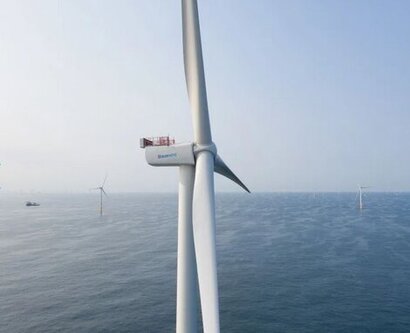
The report focuses on seven Asian markets: Japan, South Korea, Malaysia, Taiwan, Vietnam, Philippines, and Indonesia. IEEFA calculates that up to 2050, solar PV plans aim to achieve 634 GW of capacity, requiring an investment of $394 billion, with $346 billion of that amount potentially to be spent on local supply chains. Offshore wind represents a $621 billion opportunity to deliver 239 GW of capacity, with $425 billion expected to be localised.
Additionally, there is an opportunity in the maritime sector worth $72 to $97 billion to build offshore wind installation and service vessels, with almost all this investment expected to be sourced regionally.
“This report highlights the here-and-now opportunity to capitaliSe on the renewable energy supply chain” said Grant Hauber, IEEFA’s Strategic Energy Finance Advisor, Asia. “Solar energy offers immediate investment benefits to the Asia Pacific, while the advantages of participating in the offshore wind supply chain will develop over the next several years. The report maps out each element in the project supply chain, quantifies the capital investment potential, and aims to encourage more ambitious and long-term policies, which helps investors and policymakers appreciate the size of the opportunity.”
In addition to promising low-cost energy, there are opportunities to localise large proportions of the solar and offshore wind supply chains required for fully operational power generation projects.
According to the report, non-panel and non-turbine spending will account for at least 75 percent of total investment through 2050, representing a $770 billion opportunity for domestic industries over the next 25 years.
China currently dominates the global supply chain for solar PV panel manufacturing, delivering nearly 85 percent of global demand at costs that are unlikely to be matched for at least the rest of this decade. Outside of China, instead of producing PV modules, countries can direct domestic investment towards other project-level components that make up completed solar farms.
The balance of system (BOS) comprises all costs and components beyond the solar panel. IEEFA calculates that BOS investments constitute the majority of PV farm costs, which, depending on the market, range from 55 percent to 75 percent of total project expenditure.
Meanwhile, offshore wind resources in Asia are abundant, high-quality, and predictable. The region's traditional maritime economies possess inherent advantages in shipbuilding, steel fabrications, marine maintenance, and offshore services, making them well-suited for large-scale offshore wind projects.
“A key message for policymakers and industrialists is that you do not need to make solar PV modules or wind turbines to realise huge domestic manufacturing and investment benefits” added Mr Hauber. “There are materials, components, infrastructure, logistics, and services that can provide significant value to the domestic economy over sustained periods and potentially marketed regionally and beyond. Within the solar PV project supply chain, nearly all the project development and financing costs are locally incurred and potentially half or more of the BOS costs could be domestically sourced. The wind energy capacity available to nearly every country in the Asia Pacific is greater than their current total installed capacity from all sources of generation. Wind farms are becoming competitive enough to undercut imported natural gas and coal, even in markets where those prices are subsidised and in the absence of carbon pricing
Shipbuilding for offshore wind presents a standalone opportunity worth up to $97 billion, with most of that investment needed in the near term. Global wind service fleet additions have not kept pace with the increasing size of turbines and the expanding scale of wind farms and so the global push for offshore wind farms creates substantial opportunities for shipyards throughout the Asia Pacific to meet these growing demands. Currently, there are only a limited number of niche shipyards constructing these vessels, mainly in Norway and China. There is a particular need for specialised wind turbine installation vessels, as only a few can install the largest, next-generation turbines.
Currently, only about 20 percent of wind farm inputs are locally sourced in the region, but with sustained demand, this could grow to between 66 percent and 80 percent of the total investment value. Hauber suggests that the combined offshore wind farm and specialty vessel market represents an investment opportunity of around US$878 billion through 2050.
The report focuses on currently announced capacity targets for solar and offshore wind, but the market’s potential could be much larger.
If the capital costs for solar PV and offshore wind continue to fall as predicted, these technologies will offer the lowest levelized costs of electricity on each national grid. With such attractive energy costs, capacity targets are likely to expand to capture the economic benefits.
Currently, most Asia Pacific countries appear to be underestimating this opportunity. The report highlights that, despite nearly every country in the region having world-class solar and wind resources, planned renewable capacity additions remain a limited share of electricity supply.
For instance, Indonesia has one of the smallest solar bases in Asia, with the least aggressive additions relative to its available resources. Japan, despite having one of the best wind resources globally, has very modest offshore wind program targets, aiming for less than 5 percent of total demand by 2050.
Policy alignment is now needed to help countries achieve this potential. Focusing on maximising low-cost capacity additions at scale will create recurring demand, allowing local industries to capitalise on the solar and offshore wind supply chain.
For additional information:
Institute for Energy Economics and Financial Analysis (IEEFA)

